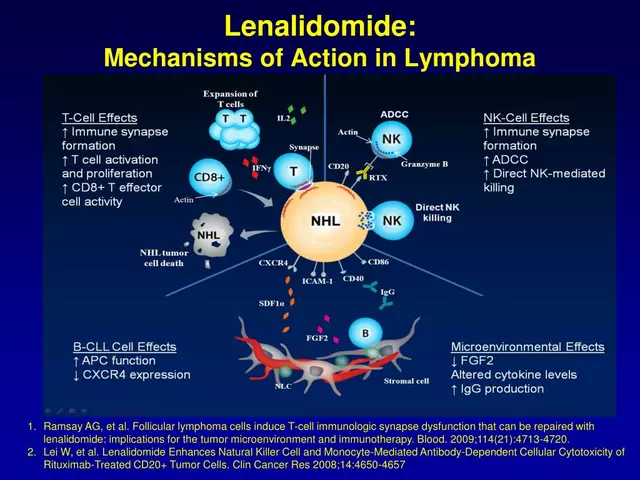Dutasteride and Mental Health: Risks, Evidence, and Safer Use Guide (2025)

A pill that helps hair or prostate trouble shouldn’t mess with your head, right? That’s the tension with dutasteride. Most people take it without a mood crash, but a small group reports depression, anxiety, or darker thoughts-sometimes early on. The data is mixed and the risks look small in absolute terms, yet the signal is real enough that regulators now warn about it. Here’s a straight, practical look at what we know, what we don’t, and how to use it safely if you choose to.
TL;DR: Does Dutasteride Affect Mental Health?
- The short answer: there’s a modest increase in reported depression and self-harm early after starting 5-alpha-reductase inhibitors (the drug class that includes dutasteride), with no clear rise in completed suicide in large studies. Individual risk varies.
- Why the concern: dutasteride blocks enzymes that help make neurosteroids like allopregnanolone, which calm the brain via GABA-A receptors. Less of these could nudge mood in the wrong direction for some people.
- Highest-risk window: the first 1-6 months of treatment. Watch for low mood, anxiety, insomnia, loss of interest, or intrusive dark thoughts.
- Who should be extra cautious: anyone with a history of depression, anxiety, bipolar disorder, recent burnout, or major life stress. Younger men using it for hair loss may notice mood shifts sooner.
- Good news: most users never have issues; if symptoms happen and you stop early, they often improve. With dutasteride’s long half-life, improvement can take weeks.
The Evidence in 2025: What We Know, What We Don’t
If you’ve searched dutasteride mental health, you’ve seen scary anecdotes and reassuring comments-often on the same page. Let’s separate signal from noise.
- Large observational studies in urology populations (men taking 5-ARIs for prostate symptoms) have found a small increase in depression diagnoses and self-harm in the first 12-18 months, but not an increase in suicide deaths. A widely cited analysis in JAMA Internal Medicine (2017) reported higher early risk of self-harm and depression after starting a 5-ARI, then risk tapered off.
- Meta-analyses through 2023 echo this: small relative risk increases for depression (often 10-30%), inconsistent anxiety signals, and no consistent rise in suicide. Absolute risk increases are low.
- Pharmacovigilance databases (like FAERS and WHO’s VigiBase) show disproportionate reporting of mood changes with 5-ARIs, especially in younger men using them for hair loss. Reporting systems can’t prove causation, but they’re good for spotting patterns.
- Randomized trials of dutasteride in BPH haven’t shown big psychiatric safety signals, but they’re not designed to detect rare mood events. They also tend to exclude people with active mental health conditions.
- Regulators have moved: the EMA and several national agencies strengthened warnings about mood changes (including suicidal ideation) for 5-ARIs. In Australia, dutasteride is TGA-approved for BPH, not hair loss; local safety updates advise monitoring for depression and stopping if serious mood changes occur.
Numbers help keep this grounded. Here’s what the risk landscape looks like based on large-scale observational research and safety reviews.
| Outcome | Evidence type (best available) | Typical relative risk range | Approx. absolute excess (per 1000 over 1-2 yrs) | When risk is highest | Notes |
|---|---|---|---|---|---|
| Depression | Large cohort studies, meta-analyses | 1.10-1.30 | +2 to +8 | First 3-12 months | Signal modest; baseline mental health shifts risk more than the drug. |
| Self-harm (including attempts) | Large cohort studies | 1.50-2.00 (early) | +0.5 to +2 | First 6-18 months | Elevated early, then returns closer to baseline. |
| Suicide death | Large cohort studies | No consistent increase | No clear excess | - | Confidence intervals wide; rare outcome. |
| Anxiety | Mixed observational data | ~1.0-1.2 (inconsistent) | 0 to +3 | Early months | Some signals, but not consistent across studies. |
| Sleep disturbance/insomnia | Case reports, pharmacovigilance | Unknown | Unknown | Early months | Likely under-recognised; can worsen mood. |
| Cognitive changes (“brain fog”) | Case reports | Unknown | Unknown | - | No consistent association in controlled studies. |
How to read this: a relative risk of 1.2 means a 20% higher risk than baseline. But if baseline risk is low, the absolute increase remains small. That’s why context matters so much: your starting mental health risk dwarfs the drug effect.
Credibility check: signals come from JAMA Internal Medicine (2017) cohort work on 5-ARIs; pooled analyses updated through 2023; pharmacovigilance patterns (FAERS, VigiBase); and label updates by the EMA/TGA. None of these prove dutasteride will cause mood changes for you-but they justify taking the risk seriously, especially early on.
Why the Brain Might Care: Mechanisms and Who’s at Risk
Dutasteride blocks type 1 and type 2 5-alpha reductase. That’s great for dropping DHT in the scalp and prostate. But those enzymes also help make neurosteroids-especially allopregnanolone-from progesterone. Allopregnanolone calms the brain by boosting GABA-A signalling. Less of it can feel like taking the foot off the brain’s brake pedal: more anxiety, lower mood, worse sleep. Animal models show that lowering allopregnanolone produces depression-like behavior; restoring it reverses that. Humans aren’t mice, but the pathway is biologically plausible.
Why dutasteride might feel different from finasteride: dutasteride is more potent and hits both isoenzymes more strongly. It can cut DHT by 90-95% (finasteride is closer to 60-70%). That may help hair and prostate outcomes but could raise the odds of side effects in susceptible people. That said, head-to-head data on mood outcomes is thin, so we can’t say dutasteride is “worse”-only that it’s more suppressive.
Who’s more likely to notice mood shifts:
- History of depression, anxiety, bipolar disorder, PTSD, or postnatal depression
- Recent major stress (job loss, grief, burnout), poor sleep, or heavy alcohol use
- Young men pursuing hair treatment, where appearance stress and expectations are high
- People prone to insomnia; sleep disruption often precedes mood change
- Concurrent meds that affect mood (some stimulants, isotretinoin), or abrupt SSRI changes
Two timing patterns show up again and again:
- Early-onset: within 2-8 weeks, often with anxiety, sleep fragmentation, and flat mood
- Delayed-onset: around 3-6 months, sometimes after a dose increase or life stress
One practical wrinkle: dutasteride’s half-life is long-about five weeks. It takes months to wash out. If you feel off and stop, symptoms can improve but not instantly. That doesn’t mean you’re stuck; it means you’ll need a plan and support while levels fall.

The Safer-Use Playbook: Step-by-Step, Checklists, and Stop Rules
There’s a careful way to try dutasteride-especially if you’re using it off-label for hair loss in Australia or you’ve ever had mood issues. Use this like a pilot checklist.
Before you start (one week prior)
- Baseline screening: complete PHQ-9 and GAD-7 (or PHQ-2/GAD-2 for a quick pass). Take 5 minutes and write down your scores.
- Set stop rules with your prescriber: “If my PHQ-9 jumps by 5 points, my sleep collapses, or I have any suicidal thoughts, we stop.” Put that in your notes.
- Pick a start dose and schedule: standard is 0.5 mg daily for BPH; for hair, many start with 0.5 mg 2-3 times per week due to the long half-life. Discuss what’s sensible for you.
- Tell a trusted person to keep an eye on you. Ask them to call it out if your mood changes.
- Protect sleep: regular sleep/wake time, limit late caffeine, dim the phone after 9 pm. Sleep is your shock absorber.
Weeks 1-4
- Log daily: mood (0-10), anxiety (0-10), sleep hours, morning erections/libido, and any new symptoms.
- Check-in at week 2: repeat PHQ-9/GAD-7; compare to baseline.
- If anxiety spikes or sleep unravels, consider pausing for a week and reassessing with your prescriber.
Weeks 5-12
- Reassess at week 8 and week 12. If stable, you can consider titrating toward your goal dose (for hair, many stay on intermittent dosing; for BPH, stick with label dosing unless told otherwise).
- Watch for flat mood, loss of interest, or dark intrusive thoughts. Don’t rationalise them away.
Red flags: stop and talk to your doctor now
- Any suicidal thoughts, new self-harm thoughts, or a plan
- PHQ-9 rise of 5+ points from baseline or sustained score ≥10
- Panic attacks, severe insomnia (under 4-5 hours sleep for 3+ nights), or sudden personality shift noticed by others
If you decide to stop
- Don’t panic about the long half-life. Expect gradual improvement over weeks as levels fall. Track progress weekly, not daily.
- Stabilise the basics: consistent sleep, daylight exposure, 20-30 minutes of moderate exercise most days, and regular meals. These aren’t platitudes-they buffer mood while your neurosteroids recalibrate.
- If symptoms are moderate to severe, ask your GP about short-term support (talk therapy, or meds if appropriate). If you feel unsafe, seek urgent help immediately.
Hair and BPH specifics
- Hair (off-label in Australia): consider starting with 0.5 mg 2x/week for 4-8 weeks, then increase only if you’re stable. Many men do well without daily dosing due to the drug’s long half-life.
- BPH: symptom relief often takes 3-6 months. If you’re high-risk for mood issues, discuss using an alpha-blocker (like tamsulosin) first, then adding dutasteride later if needed, with close monitoring.
Rules of thumb
- If you’re unsure whether a mood dip is “life” or the drug, pause for two weeks and track. A clear uptick suggests a contribution.
- If sleep breaks first, address sleep hard and fast. Often, mood follows sleep.
- Don’t chase hair gains with dose jumps if you’re even slightly off mentally.
Alternatives, Trade-offs, and Real-World Scenarios
You’ve got options, and each has its own pros and cons. Think in terms of “what problem am I trying to solve” and “what am I willing to trade.”
For hair loss (AGA)
- Low-dose oral minoxidil (1.25-5 mg/day): good for shedding control and density; side effects can include ankle swelling, faster heart rate, and body hair growth. Mood effects are uncommon.
- Topical finasteride/dutasteride: lower systemic exposure vs oral, but not zero. Useful if you want to reduce systemic risk; watch for side effects anyway.
- Topical minoxidil 5% foam/liquid: safe, but adherence is the challenge.
- Microneedling (0.6-1.5 mm weekly): boosts topical response; cheap, effective if you stick with it.
- LLLT devices, PRP, hair transplant: costlier; useful for specific goals; minimal mental health impact.
For BPH (urinary symptoms)
- Alpha-blockers (tamsulosin, alfuzosin, silodosin): work fast on flow; side effects can include dizziness and ejaculation changes; minimal mood concerns.
- Tadalafil 5 mg daily: helps urinary symptoms and erections; can cause headache/flushing; neutral on mood for most.
- Combination therapy: alpha-blocker + 5-ARI for larger prostates; you can start the alpha-blocker first and add a 5-ARI later once stable.
- Procedures: UroLift, Rezūm, TURP. No systemic mood effects; you trade pills for procedures.
Finasteride vs dutasteride
- DHT suppression: dutasteride > finasteride (90-95% vs ~60-70%).
- Label approvals: both for BPH; finasteride is more commonly used for hair loss in many countries; dutasteride is off-label for hair in Australia.
- Mood risk: data is stronger for finasteride simply because it’s more studied; dutasteride’s risk is plausible and supported by class-level signals, but head-to-head mood data are limited.
- If you’re high-risk for mood issues, many clinicians try topical finasteride or low-frequency dutasteride first.
Decision pointers
- If hair loss is crushing your confidence and worsening your mood right now, treating it can improve mental health. Balance that against the small drug-related risk.
- If you’ve had severe depression or suicide attempts, consider non-5-ARI routes first. If you still want a trial, set tight stop rules and involve your GP/psychologist from day one.
- If BPH symptoms are mild, start with lifestyle and alpha-blockers. Add a 5-ARI only if prostate size and symptom trajectory warrant it.
Two quick scenarios
- 29-year-old on dutasteride for hair: after 3 weeks, sleep drops to 4 hours, feels wired and flat. Action: hold the drug for 2-4 weeks, fix sleep aggressively, reassess. If mood normalises, consider topical finasteride or very low-frequency dutasteride with monitoring.
- 66-year-old with BPH and prior mild depression 10 years ago: starts dutasteride with tamsulosin. Action: baseline PHQ-9, week-4 and week-12 check-ins. If stable, continue; if mood slides, stop the 5-ARI and lean on tamsulosin or tadalafil.
FAQ, Quick Checks, and What to Do Next
Is “post-finasteride syndrome” a thing with dutasteride?
Persistent symptoms after stopping 5-ARIs are reported by some patients, including low mood, sexual changes, and brain fog. High-quality data are limited and definitions vary. The safest approach is prevention: careful selection, slow initiation, and early stopping if you’re not okay.
Can dutasteride help mood for some people?
There’s no solid evidence it improves mood. If your hair or urinary symptoms are causing distress, treating them can help your mental health indirectly.
Will I feel better right away if I stop?
Maybe, but often it’s gradual. Dutasteride hangs around for weeks. Track weekly, support sleep, exercise, daylight, and talk to your doctor if you’re not improving.
Do SSRIs or therapy still work if I’m on dutasteride?
Yes. If you need help, get it. Let your clinician know you’re on a 5-ARI; it helps them tailor care.
Is saw palmetto safer?
It also inhibits 5-alpha reductase (weakly). Side effects can still occur, and quality varies. Don’t assume “natural” means “risk-free.”
What about blood tests or hormone panels?
They can’t diagnose a mood side effect. Focus on symptoms, function, and validated screens like PHQ-9/GAD-7.
Quick self-check (use this monthly)
- PHQ-9 change: +5 points from baseline? That’s a yellow flag.
- Three-night sleep collapse? That’s a red flag to pause and call.
- Any suicidal thoughts? Stop the drug and seek urgent help now.
Your next steps
- Clarify your goal (hair vs BPH), your risk tolerance, and your non-negotiables (e.g., “my sleep can’t suffer”).
- Book a chat with your GP or dermatologist. Bring your baseline PHQ-9/GAD-7 and a plan for check-ins at weeks 2, 8, and 12.
- If you start: go slow, log symptoms, involve a trusted person, and stick to your stop rules.
- If you’re unwell now: stop the medication and get professional help. You can restart life goals later-your safety comes first.
Why you can trust this: the guidance here reflects large cohort data (e.g., JAMA Internal Medicine 2017), pooled analyses through 2023, regulator communications (EMA, TGA), and the known neurosteroid biology of 5-alpha-reductase. It’s people-first because none of that matters unless it helps you make a safer, clearer choice.







I've been on dutasteride for two years while treating BPH, and the first three months felt like a roller‑coaster for my mood. I started out with a PHQ‑9 score of three, but by week five it jumped to nine without any obvious life stressors. The insomnia set in quickly, with me waking up three times a night and feeling wired the next morning. I tried to attribute it to the usual work grind, yet the timing lined up almost perfectly with the drug initiation. After a phone call with my urologist I was told the side‑effects are “rare” and to just ride it out. I didn’t accept that; I pushed for a repeat PHQ‑9 and a sleep diary. The data confirmed a clear deterioration, so I asked to pause the medication. Within three weeks of stopping, my sleep returned and my PHQ‑9 fell back to four. The lingering half‑life of dutasteride meant the mood swing tapered off gradually, not instantly, which is why I kept a symptom log for eight weeks. In hindsight, the early warning signs could have been caught sooner with a baseline screen and a simple stop‑rule like “PHQ‑9 increase of five points”. My experience shows that even “modest” relative risks translate to real changes for susceptible individuals. The neurosteroid hypothesis makes sense physiologically, so the drug isn’t a magic bullet without trade‑offs. I now advise any new patient to set up a weekly mood check for the first three months. It also helps to involve a trusted friend who can notice subtle shifts that you might miss. If you do notice a dip, a brief pause often rescues you without losing the therapeutic benefit. Bottom line: dutasteride can affect mental health, and the onus is on both prescriber and patient to monitor it closely.
Sounds like a solid summary but the article could've used more plain language the tables are helpful though they feel a bit dense for the average reader you get the gist though
I’m not buying the hype that dutasteride is a major mood‑killer 🚫🧠. The absolute risk increase is tiny – a few extra cases per thousand – and most studies fail to control for baseline depression 🌱. If you’re already anxious about hair loss, the nocebo effect can easily inflate symptoms 😅. That said, the neurosteroid pathway is real, but it’s a stretch to blame a single drug for complex psychiatric outcomes 📚. So keep an eye on yourself, but don’t panic the data aren’t a death sentence 💡.
From a pharmacodynamics view, dutasteride’s dual‑isozyme inhibition yields >90% DHT suppression, which correlates with the observed early‑phase neurosteroid dip. Monitoring PHQ‑9/GAD‑7 aligns with best‑practice risk mitigation.
Oh sure, because we all love a drug that sticks around for weeks and then decides to mess with your sleep – what could possibly go wrong? Jokes aside, if you’re willing to log mood daily and have a fallback plan, the risk is manageable. Just don’t be surprised when you feel a little “off” during the first two months, it’s the drug doing its thing.
In many European guidelines the emphasis is on baseline mental‑health screening before starting any 5‑α‑reductase inhibitor, which reflects a more precautionary culture than we sometimes see in the States. While the article is thorough, a brief note on regional prescribing differences would have added valuable context for an international audience.
While I appreciate the balanced tone of the guide, it underplays the seriousness of even a modest increase in self‑harm risk. Patients with prior depressive episodes deserve a stricter protocol: mandatory bi‑weekly PHQ‑9 assessments for the first six months and an immediate cessation clause if scores rise sharply. Ignoring these safeguards is not an option when lives are at stake.
hey guys i tried dutasteride for hair and i felt a bit weird at first but i kept going cause the doc said it was fine later i noticed i was sleeping less and felt kinda down i logged it and stopped after a month i felt better after a few weeks maybe it wa just the drug or maybe i was just stressed dont forget to watch ur mood yo
They're hiding the truth about dutasteride, and you’ll never learn it.
Sure, just sprinkle a PHQ‑9 here and a GAD‑7 there and you’ll magically eliminate all risk – as if a questionnaire can out‑compete a drug’s half‑life. In reality, the scales are useful, but they’re not a crystal ball; clinical judgement still matters.